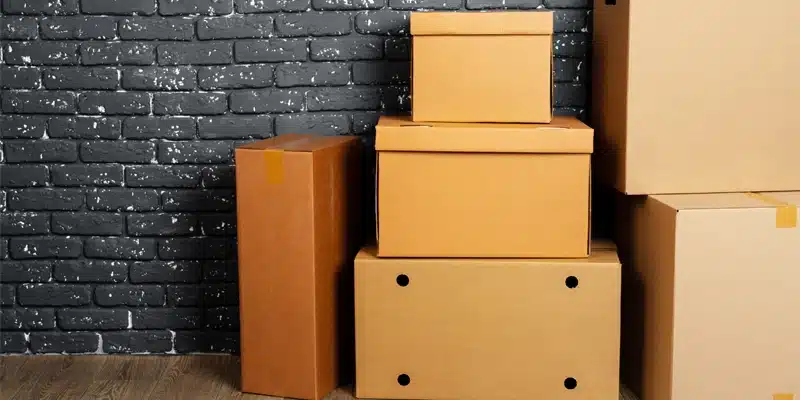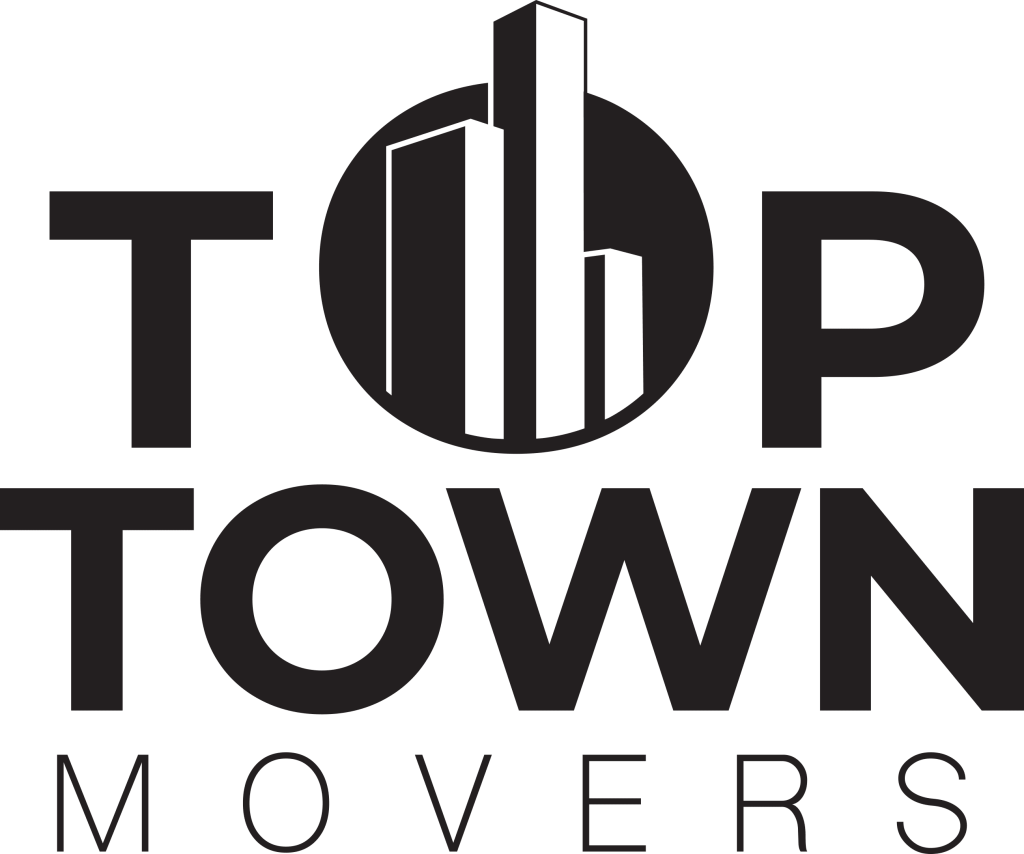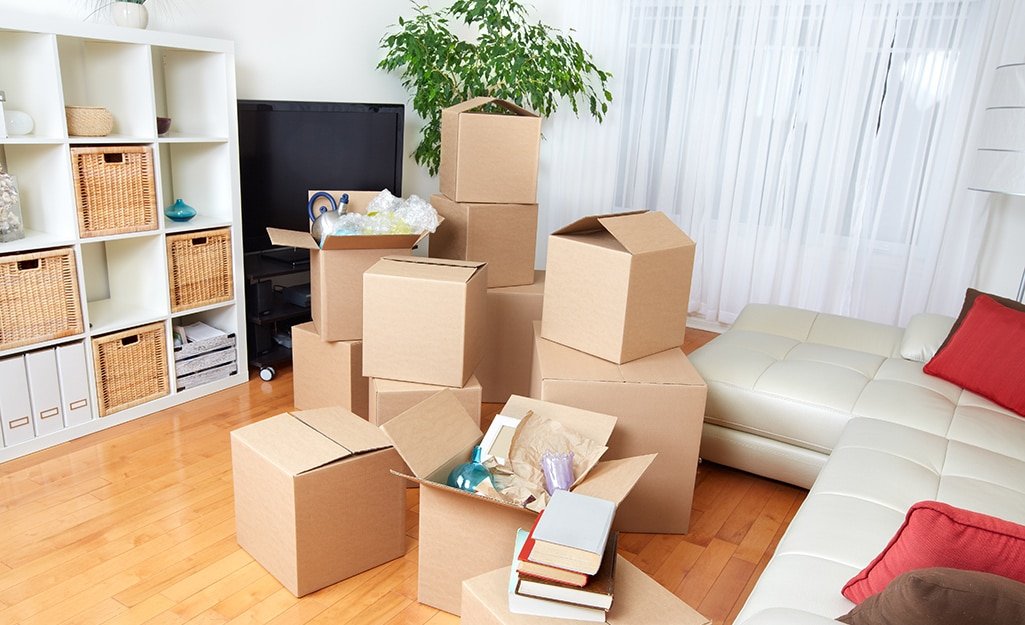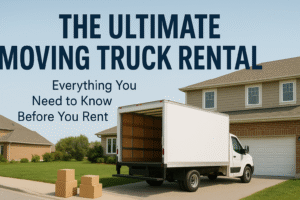Moving can be one of life’s most stressful events, but with the right tools, it can be significantly smoother. While professional movers like Top Town Movers, serving Ontario and specifically the North York area, handle the heavy lifting, the quality and type of moving boxes you use for packing your belongings are absolutely crucial to the success and ease of your relocation. Skimping on boxes can lead to damaged possessions, frustrated packers, and a far more chaotic moving day.
This comprehensive guide will delve into the world of moving boxes, helping you understand the different types available, their ideal uses, and expert tips on how to choose and utilize them to make your move as efficient and stress-free as possible.
- Learn More >>>>The BEST House Moving Tips (and Mistakes to Avoid)!
Why Your Choice of Moving Boxes Matters
It might seem trivial, but the right moving boxes are more than just cardboard containers. They are the first line of defense for your valuables.
- Protection: Well-constructed boxes, used correctly, protect items from crushing, impacts, dust, and moisture.
- Efficiency: Standardized box sizes allow for easier stacking and maximizing space in the moving truck, leading to a smoother load and unload.
- Organization: Clearly labeled, appropriately sized boxes make unpacking significantly faster and less overwhelming in your new home.
- Safety: Sturdy boxes that are not overloaded are safer for you and your movers to lift and carry, reducing the risk of injury.
The Different Types of Moving Boxes (and Their Best Uses)
Not all moving boxes are created equal. Understanding their specific purposes will help you pack smarter, not harder.
1. Small Moving Boxes (1.5 Cubic Feet)
- Dimensions: Approximately 16″ x 12″ x 12″
- Description: These are the workhorses for heavy items. Their compact size prevents them from becoming too heavy to lift when filled with dense objects.
- Best For:
- Books
- Canned goods
- Tools
- DVDs, CDs, video games
- Small kitchen appliances (e.g., toaster, blender)
- Cleaning supplies
- Perishable pantry items (non-liquids)
- Small electronics (e.g., routers, modems)
- Heavy decorative items

- Learn More >>>>Tips to Make Moving Less Stressful
2. Medium Moving Boxes (3.0 Cubic Feet)
- Dimensions: Approximately 18″ x 18″ x 16″
- Description: The most versatile and commonly used box size. They offer a good balance between capacity and manageability.
- Best For:
- Pots and pans
- Small kitchen appliances
- Clothes (folded)
- Linens and towels
- Toys
- Pantry items
- Toiletries and bathroom supplies
- Lampshades (if packed carefully)
- General household items
3. Large Moving Boxes (4.5 Cubic Feet)
- Dimensions: Approximately 18″ x 18″ x 24″
- Description: Designed for lighter, bulkier items. Do not use these for heavy contents, as they will become unmanageable and prone to breaking.
- Best For:
- Linens and bedding (blankets, pillows, duvets)
- Towels
- Large lampshades
- Children’s toys (stuffed animals, lighter plastic toys)
- Winter coats and bulky clothing
- Plastics storage containers (empty or filled with very light items)
4. Extra-Large Moving Boxes (6.0 Cubic Feet)
- Dimensions: Approximately 24″ x 18″ x 24″
- Description: The largest standard utility box. Strictly for very light, bulky items.
- Best For:
- Comforters and sleeping bags
- Pillows
- Large stuffed animals
- Cushions from outdoor furniture
- Very light, bulky decorative items
- Learn More >>>>Why THESE Boxes Are the BEST for Moving and Packing
5. Specialty Moving Boxes
These are the unsung heroes that protect your most valuable or awkward possessions.
- Wardrobe Boxes:
- Description: Tall boxes with a metal bar inside, allowing you to hang clothes directly from your closet.
- Best For: Hanging clothes (suits, dresses, shirts), curtains, drapes. Prevents wrinkling and makes unpacking your closet a breeze. Can also be used for bulky bedding at the bottom.
- Dish Pack Boxes (Dish Barrels/Cell Boxes):
- Description: Extra-sturdy, double-walled boxes often sold with cell dividers to separate plates, glasses, and fragile kitchenware.
- Best For: China, glassware, delicate dishes, fragile collectibles, small sculptures. Investing in these is highly recommended for protecting breakables.
- Picture/Mirror Boxes:
- Description: Flat, telescopic boxes that expand to fit various sizes of artwork, mirrors, and large framed items.
- Best For: Mirrors, framed artwork, large photos with glass, flat-screen TVs (if specially designed TV boxes are not available). Always use padding (bubble wrap, blankets) inside.
- Lamp Boxes:
- Description: Tall, slender boxes designed to protect floor lamps.
- Best For: Floor lamps (disassemble shades and bulbs), golf clubs, fishing rods, long umbrellas.
- File Boxes (File Totes):
- Description: Sturdy boxes sized for standard file folders, often with lids and handles.
- Best For: Important documents, medical records, financial papers, school records. Keeps them organized and accessible.
- Mattress Boxes:
- Description: Large, flat boxes or bags designed to protect mattresses from dirt, tears, and bugs during transit.
- Best For: Mattresses and box springs of all sizes. Essential for keeping your bedding clean.
- Learn More >>>>Assembling a White Tape-Free Moving Box
Where to Get the Best Moving Boxes
While free boxes might be tempting, quality pays off in the long run.
- Professional Moving Companies (Like Top Town Movers): We offer a full range of high-quality, sturdy moving boxes and packing supplies. This ensures consistency and reliability. Plus, we can advise you on the right quantities.
- Moving Supply Retailers: Stores specializing in moving supplies offer a wide variety of sizes and specialty boxes.
- Home Improvement Stores: Large chains like Home Depot and Lowe’s carry a selection of standard moving boxes.
- Online Retailers: Amazon, U-Haul, and other online stores sell moving boxes in bulk, often with delivery options.
- Used Boxes (with caution):
- Grocery Stores/Liquor Stores: Can sometimes provide free boxes. Be cautious about cleanliness, sturdiness, and previous contents (e.g., food residue, pests).
- Online Marketplaces/Community Groups: People often give away used moving boxes after their move. Inspect them thoroughly for damage, dampness, or infestations before using. Avoid boxes that seem flimsy or show signs of wear and tear.

- Learn More >>>>How to Assemble the Four Piece Mirror & Picture Box
How Many Moving Boxes Do You Need? (A General Guideline)
Estimating box quantity is tricky, but here’s a rough guide for a fully furnished home. Adjust based on your level of decluttering and accumulated items.
- Studio Apartment: 10-20 small, 10-15 medium, 5-10 large
- 1 Bedroom Home/Apartment: 20-30 small, 20-25 medium, 10-15 large, 2-3 wardrobe
- 2 Bedroom Home: 30-40 small, 30-35 medium, 15-20 large, 3-4 wardrobe, 1-2 dish pack
- 3 Bedroom Home: 40-50 small, 40-45 medium, 20-25 large, 4-5 wardrobe, 2-3 dish pack
- 4+ Bedroom Home: 50-70+ small, 50-60+ medium, 25-30+ large, 5-7+ wardrobe, 3-4+ dish pack
Always buy slightly more than you think you need. It’s better to have a few extra than to run out mid-packing. You can always return unused boxes.
- Learn More >>>>How to Assemble the Four Piece Mirror & Picture Box
Expert Tips for Using Moving Boxes Effectively
Choosing the right moving boxes is just the beginning. How you pack them makes all the difference.
- Don’t Skimp on Packing Materials: Always use packing paper, bubble wrap, and foam peanuts to cushion items inside boxes. Fill all empty spaces to prevent shifting.
- Pack Room by Room, Category by Category: This helps you stay organized and ensures items for a specific room end up in the same boxes.
- Heavy Items in Small Boxes: This is the golden rule. If you can barely lift a box, it’s too heavy. Spread heavy items across multiple small boxes.
- Light Items in Large Boxes: Use large boxes for bulky but light items like pillows, blankets, and towels.
- Don’t Overload Boxes: Overloaded boxes are prone to breaking, and they are difficult and dangerous to lift.
- Don’t Under-load Boxes: Boxes with too much empty space can crush when stacked. Fill gaps with crumpled paper or soft items.
- Tape Boxes Securely: Use good quality packing tape. Tape the bottom seams of the box thoroughly (an ‘H’ pattern of tape is recommended for both top and bottom). Don’t just rely on the box’s interlocking tabs.
- Label Every Box Clearly:
- Room Designation: “Kitchen,” “Master Bedroom,” “Living Room.”
- Contents (Brief): “Pots & Pans,” “Books,” “Linens.”
- Special Instructions: “FRAGILE,” “THIS SIDE UP,” “ESSENTIALS.”
- Numbering (Optional but Recommended): Assign each box a number (e.g., 1 of 50, 2 of 50) and keep an inventory list. This helps ensure all boxes arrive.
- Keep Important Documents Separate: Pack all critical documents (passports, financial records, medical records, moving contracts) in a dedicated file box or bag that travels with you, not in the moving truck.
- Create an “Essentials” Box: This is the one box you’ll need immediately upon arrival. Pack toiletries, medications, a change of clothes, basic kitchen items (coffee, paper plates, a few utensils), and chargers. Label it clearly and keep it accessible (ideally in your personal vehicle).
- Disassemble Furniture: Take apart beds, tables, and shelves. Place all screws, bolts, and small parts into clearly labeled plastic bags and tape them directly to the corresponding furniture piece or put them in a dedicated “parts” box that travels with you.
- Protect Furniture: Use moving blankets and shrink wrap for all large furniture items, regardless of whether they go into moving boxes.
- Learn More >>>>500+ Things Gone | How To Declutter Like You Are Moving
Why Professional Movers Use the Best Boxes (and You Should Too!)
At Top Town Movers, we emphasize the importance of using the right moving boxes because we see the difference it makes every day on the job in North York and across Ontario.
- Reduced Damage Claims: Properly packed and protected items in sturdy boxes are far less likely to incur damage during transit.
- Faster Loading & Unloading: Uniformly sized, well-packed boxes stack efficiently in the truck, optimizing space and reducing loading/unloading time.
- Smoother Workflow: Our movers can work more efficiently when boxes are manageable, clearly labeled, and structurally sound.
- Client Satisfaction: We know that a smooth, damage-free move starts with smart packing, and the right boxes are fundamental to that.
Don’t underestimate the impact of your moving boxes on the success of your relocation. By investing in the right types and using them correctly, you’ll ensure your belongings are protected, your move is organized, and your transition into your new Ontario home is as easy and stress-free as possible. When you choose Top Town Movers, you’re not just getting movers; you’re partnering with experts who understand every detail of a successful move, right down to the very best moving boxes.

































